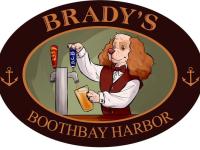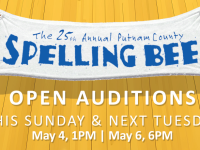Quest for speed on the Isle of Man: Going from 180 to 40 mph to make a curve
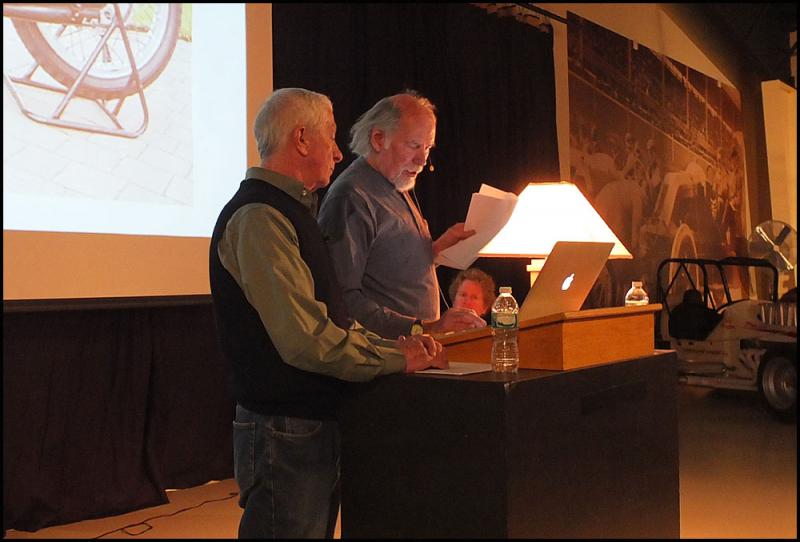 Charlie Vincent (left) and Jack Churchill lead the conversation on racing motorcycles on the Isle of Man. The fourth and final program presented by the Owls Head Transportation Museum in its Quest for Speed exhibition. (Photos by Chris Wolf)
Charlie Vincent (left) and Jack Churchill lead the conversation on racing motorcycles on the Isle of Man. The fourth and final program presented by the Owls Head Transportation Museum in its Quest for Speed exhibition. (Photos by Chris Wolf)
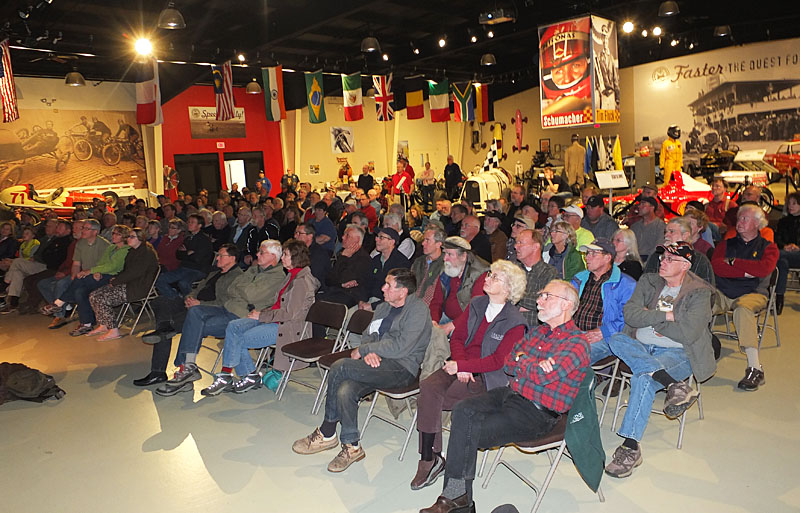 More than 180 people attended the program.
More than 180 people attended the program.
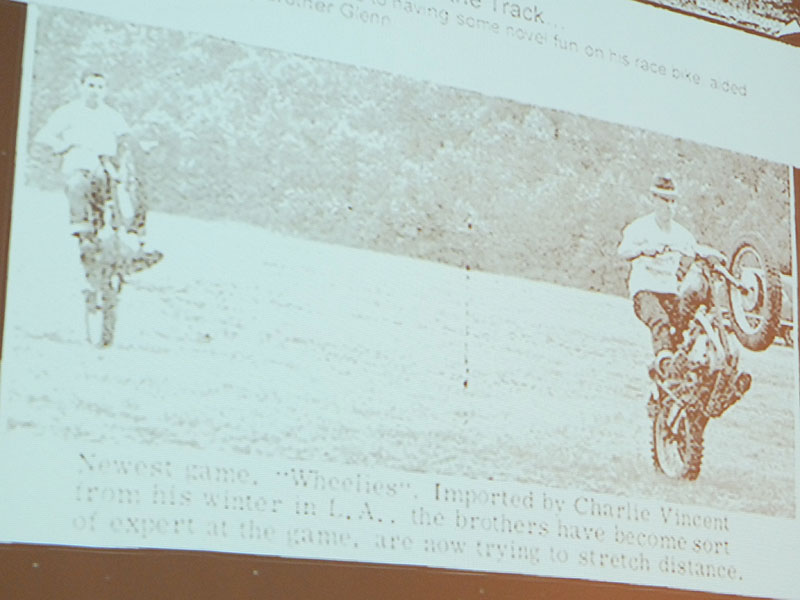 Brought from a visit to California, Charlie Vincent is generally credited with bringing the “wheelie” to Maine.
Brought from a visit to California, Charlie Vincent is generally credited with bringing the “wheelie” to Maine.
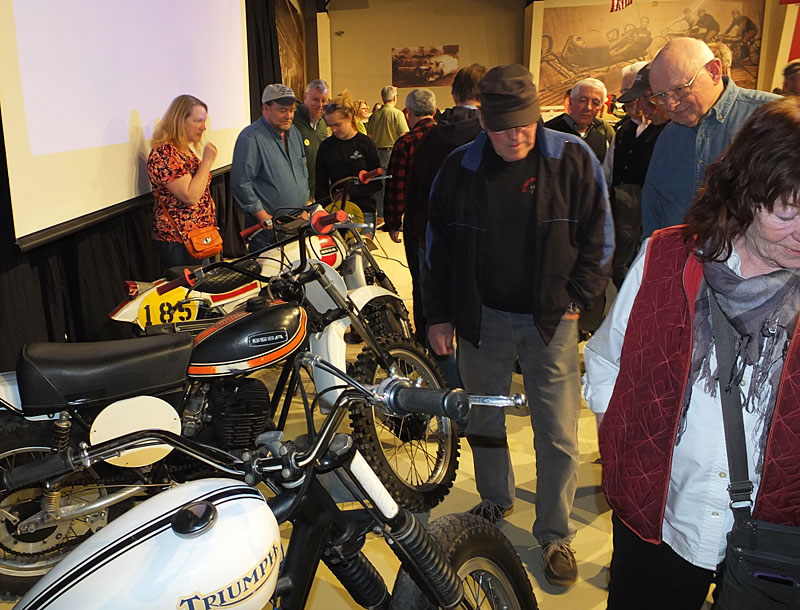 The crowd admired some of Charlie Vincent’s bikes he used for racing before his retirement.
The crowd admired some of Charlie Vincent’s bikes he used for racing before his retirement.
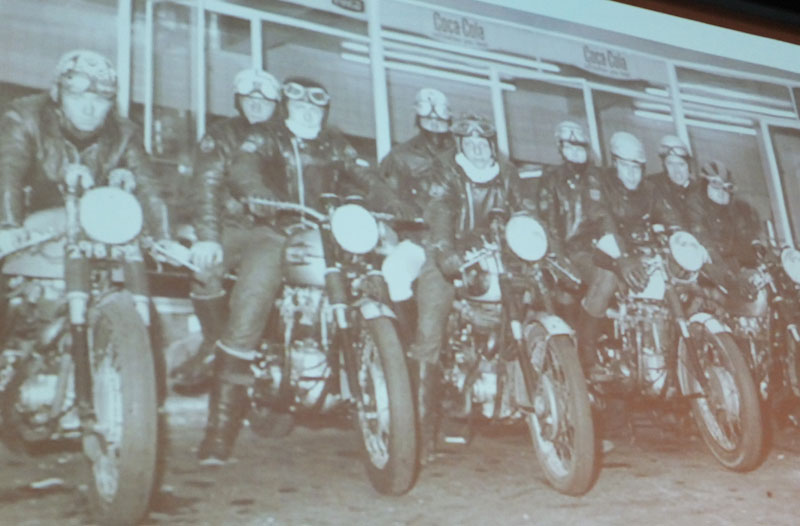 The turned down handlebars were a style for biker gangs.
The turned down handlebars were a style for biker gangs.
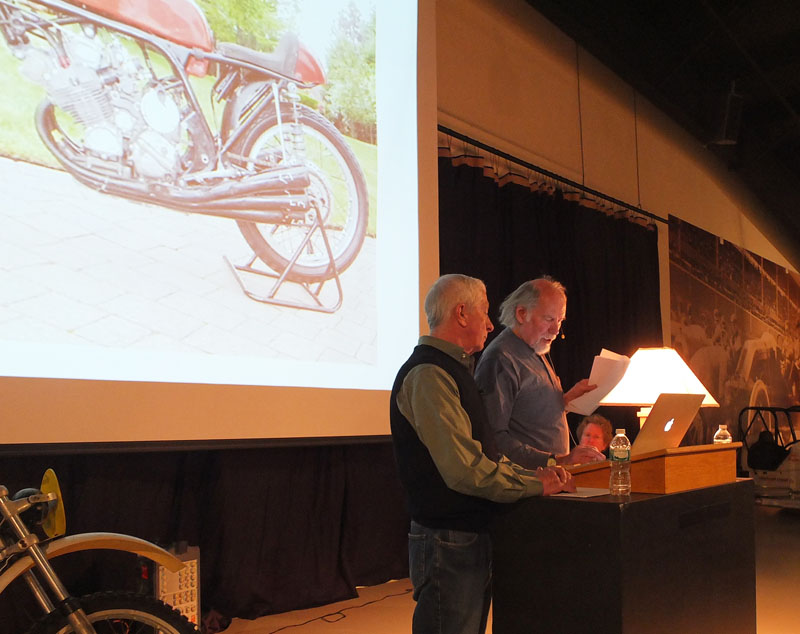 The program was presented as a multi-media presentation.
The program was presented as a multi-media presentation.
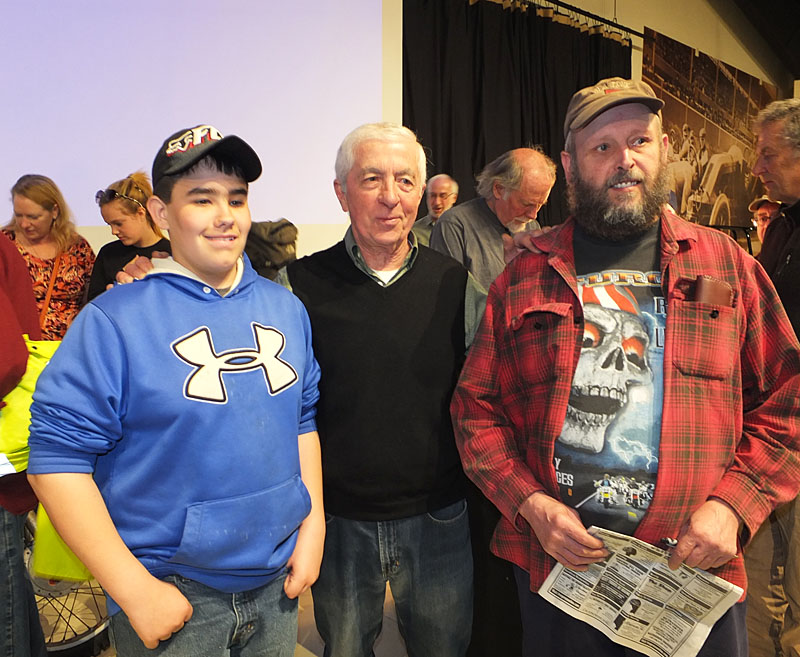 Left to right: Issac Mills of Liberty, Charlie Vincent and Seth Harrimn talk after the lecture.
Left to right: Issac Mills of Liberty, Charlie Vincent and Seth Harrimn talk after the lecture.
 Charlie Vincent (left) and Jack Churchill lead the conversation on racing motorcycles on the Isle of Man. The fourth and final program presented by the Owls Head Transportation Museum in its Quest for Speed exhibition. (Photos by Chris Wolf)
Charlie Vincent (left) and Jack Churchill lead the conversation on racing motorcycles on the Isle of Man. The fourth and final program presented by the Owls Head Transportation Museum in its Quest for Speed exhibition. (Photos by Chris Wolf)
 More than 180 people attended the program.
More than 180 people attended the program.
 Brought from a visit to California, Charlie Vincent is generally credited with bringing the “wheelie” to Maine.
Brought from a visit to California, Charlie Vincent is generally credited with bringing the “wheelie” to Maine.
 The crowd admired some of Charlie Vincent’s bikes he used for racing before his retirement.
The crowd admired some of Charlie Vincent’s bikes he used for racing before his retirement.
 The turned down handlebars were a style for biker gangs.
The turned down handlebars were a style for biker gangs.
 The program was presented as a multi-media presentation.
The program was presented as a multi-media presentation.
 Left to right: Issac Mills of Liberty, Charlie Vincent and Seth Harrimn talk after the lecture.
Left to right: Issac Mills of Liberty, Charlie Vincent and Seth Harrimn talk after the lecture.
OWLS HEAD — The Isle of Man is a small island that sits between England and Ireland in the Irish Sea. It is also known for its incredibly fast and dangerous motorcycle racing. On Saturday, April 18, the Owls Head Transportation Museum concluded its fourth and final installment of its Winter Education Series with “Motorcycle Racing on the Isle of Man,” presented by Charlie Vincent and Jack Churchill.
In the Isle of Man’s 104 year history of motorcycle racing, 234 riders have died while competing. As Jack Churchill, a motorcycle aficionado, builder, historian and collector put it, “If you race motorcycles, you have a very short life expectancy.”
More than 180 people turned out to hear and watch the presentation. Ethan Yankura, education director and curator for the museum, said the series was all part of the museum’s, “Faster: The Quest for Speed,” exhibition at the museum.
The exhibition follows the unifying theme of the human drive for competition throughout history, at all stages of life and how that competition speeds progress in transportation, technology and society.
“We had Jack Churchill and Charlie Vincent today talking about the isle of Man races,” said Yankura. “Jack spoke more to the road racing aspect. Charlie was actually an International Six Day Trial gold medalist at the Isle of Man in the off-road — they called it the ‘scramble’ at the time. He competed all over the United States, as well.”
Ex motorcycle racer Vincent has been around motorcycles all his life and said Isle of Man was one of the neatest motorcycle places he had ever been to.
“It’s just one little island that just loves motorcycles,” he said. “They have motorcycle museums. They run trials over there. They run two road races for six days and the people there are so nice. It’s just out of this world.”
Vincent said it is one of the most dangerous tracks to race on in the world.
“It’s the most dangerous because you’re going right by hedgerows, stone walls, curves and there’s no run-off anywhere. If you make a mistake, you fail.”
Jack Churchill said the museum had asked him to talk about this particular subject.
“The island is very beautiful, it’s small and picturesque,” he said. “I think any biker in England or Ireland would want to go there because it has been going on for 100 years.”
It’s neither baseball nor football over there, its soccer and motorcycle, said Churchill.
“These are the people they admire and try to imitate,” he said. “These are the people they follow, so if they have an opportunity to go for a week or two to this race, the whole place is just flooded with people. It goes through a number of towns, up over the mountains; it’s got tight corners, long corners and a jump,” he said.
Earlier in the talk, Churchill mentioned that the racers can hit speeds of 180 mph. Churchill said there was no visual cue on the track to let you know a turn is coming up.
“You have to go from 180 mph down to 40 to make that curve and all you have to go by is the white house on the right for a cue,” he said. “He has to take his cue from the front porch on that house and know if he doesn’t start slowing down, he’ll never make that corner.”
Churchill said the Isle of Man race course is 37 miles long.
“The Isle of Man race is only one race,” he said. “It lasts for a week. There are a lot of practice sessions. There are other road races there, as well. There’s the Southern 100, which is part of the Irish road race series. And they’re geared up for tourism there, too. They have the beds and the hotels.”
Churchill suggested that Camden-Rockport should have the Bay Chamber TT races.
“Bay View Street would make a beautiful course with the corners and he could show them where to put the hay bales,” he said. “It’s not the kind of traffic they would like to see, but it could be very lucrative for them.”
Event Date
Address
United States


























